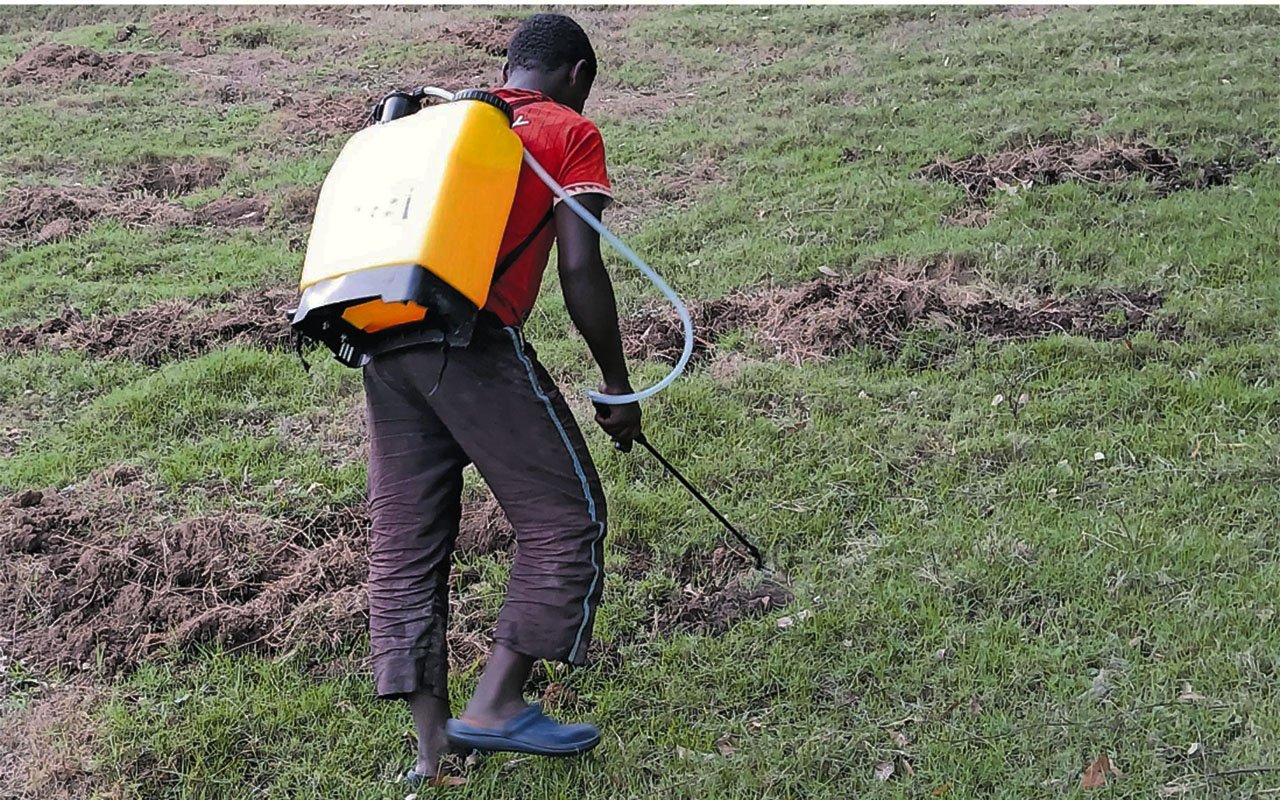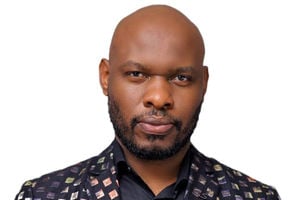Prime
Niyonzima’s warning sign a day before MV Templar boat tragedy

Ill-fated. MV Templar that capsized on Lake Victoria in November last year, killing more than 30 people. PHOTO BY ABUBAKER LUBOWA
What you need to know:
- Part I. Alex Niyonzima is one of the survivors of the MV Templar boat accident which occurred on November 24, 2018, near Mutima Beach on Lake Victoria, claiming the lives of more than 30 people.
- In Part 1 of the excerpts of his book, MV Templar, A Survivor’s Tale, Niyonzima gives a detailed account of the events before the fateful day.
“A hasher called William Walusansa, also known at the Hash as “Kamdulu”, was [getting married] and had invited many people from the Kampala Hash House Harriers to attend his wedding. Walusansa actually invited the “entire” Kampala Hash because I remember seeing a wedding invitation card addressed to “The Kampala Hash House Harriers” earlier that week on one of the social media chat groups.
Walusansa had made a special request to Prince David Wasajja of Buganda to grace the function as the guest of honour. The Prince had accepted the invitation. Walusansa had also personally asked me to come to his wedding but I was not sure whether I would attend because I did not have enough money to fuel my car for the about100km round trip to Entebbe.
Two days before the ill-fated boat cruise, which was a Thursday, I got a call from Prince Wasajja. He reminded me that we, as Kampala Hashers, had been invited to attend the wedding ceremony in Entebbe Town. I told the Prince about my issue of fuel shortage for the journey. He told me not to worry. He suggested that we could travel together in his vehicle, if I did not mind, to which I obliged.
He asked me to find him in Mengo, a Kampala suburb, the following day and from there, we would set off for the wedding in Entebbe. This sounded like a good plan and that is what I did.
Travel plan
The scheduled departure time was 2:30pm. We had planned to be in Entebbe before 4pm. The Prince had also asked me to call a mutual friend, Julius Nkuraija, also a veteran hasher, to attend the wedding. Unfortunately, Nkuraija had to decline because he had to attend a tele-conference interview with some people in the United States.
So, on Friday, November 23, 2018, the day before the boat cruise, I headed to Mengo to meet the Prince and attend the wedding in Entebbe. By 3:15pm, we had set off and arrived in Entebbe at about 4pm and took our seats at a table reserved for the guest of honour.
Strangely, during the journey to Entebbe, everybody in the vehicle was quiet. The usually cheerful prince was not saying much. So, I found a magazine in the vehicle and began to read it.
It was a copy of the September edition of The Independent magazine, produced and published by journalist Andrew Mwenda.
The magazine featured an article about a boat disaster, which happened on the Tanzanian side of Lake Victoria. That incident involved a marine vessel, MV Nyerere, which had capsized on September 20, 2018, as it was approaching the port.
A total of 228 people died. For some reason, rather than just skip it, I became quite intrigued by the article and read it all. I will never know the reason that led me to read it all. Perhaps it was because we were also scheduled to attend a boat cruise the following day. Perhaps I read it just because the magazine was there. I had heard about the MV Nyerere boat disaster from the news on TV. The incident appeared to have happened so far away that I had not paid much attention to it.
Premonition
Briefly, the article said the MV Nyerere was running its regular scheduled route from Bugolora on Urekewe Island to Bwisya on Ukara Island when it capsized in the afternoon, 50 metres from the dock. What shocked me most was the statement ‘50 metres from the dock,’ the size of an Olympic swimming pool, half the length of a football field.
It sounded as if it was so close to the land yet a colossal number of people had died as a result. After reading the whole article, I said to the prince: “Can you imagine this boat, MV Nyerere, capsized while it had got so close to the shore?” I added: “I have heard that a lot of boat or marine accidents tend to happen when the vessel is getting very close to the shore or to the port.”
We talked about it for some time and I am sure that the Prince’s driver and his bodyguard overheard our conversation. I remember meeting the driver later at the requiem mass of John Bosco Nyanzi, one of the people who died in the tragic incident. The driver was almost in tears while he reminded me of this particular conversation. I also remember mentioning to the Prince that day when we had the conversation that: “It appeared that the MV Nyerere capsized because the boat had tipped to one side”.
This was because when the passengers on the boat saw that they were getting close to the shore, some of them wanted to get off the vessel first. So, a number of passengers began to move to the side where the exit is located. This movement created an imbalance of loads on the vessel and it began to list. The article also said on the vessel were vehicles, which included a tractor, and cargo that included cement, maize and bananas plus more than 400 passengers. The majority of the passengers had been attending the market day in Bugolora.
It was reported that as a result of the shifting of the loads on the vessel and the resultant listing, the vessel capsized, causing the death of 228 people. Upon hearing this, Prince Wasajja said to me: “You know what, that is quite plausible. It probably only takes a few people shifting their weight to maintain balance on a boat. Sometimes on Temp’s boat, when the announcement is made to balance the boat, it only takes just about five people moving one way to the other to effect the necessary required balance.”
That was where the conversation about MV Nyerere ended. At the wedding in Entebbe, there was a relatively big turnout of hashers. Mengo Hash House Harriers (MHHH), who run every Friday, had opted to hold the run at a place that was just opposite the wedding venue. Most of these hashers, who numbered over 40, had chosen to first attend their event and later join the wedding party.
Apparently, there are two MHHHs in Kampala
There is the Kampala Hash that runs on Monday and the Mengo Hash that runs on Friday. The Mengo Hash Run that day took place as usual, between 6pm and 7pm, and the first hashers from the run, started arriving at the wedding at about 7:30pm.
Meanwhile, the wedding dinner had been served at around 5pm and was to wind up by 6:30pm. I think most hashers missed out on the meal since they arrived after it had been served. I can imagine they were quite hungry as it appeared they had not had a good meal at the hash or some of them had chosen to forego it and aim for the potentially more varied wedding dinner menu.
Unfortunately for them, the wedding dinner was already finished by the time they arrived. As soon as the hashers arrived, they went into party mode. The present hashers were invited to give a speech. The speech was delivered by Grand Master Jimmy Busuulwa. We raised our shoes to form an arch through which the bridal party passed right after the speech.
After that, it was party time. I was in the background when the speech was being made. Prince Wasajja remained seated while the speech went on. While I was away, he was joined by a real estate magnate, Mr Kassim Kiwanuka, who we know as “Landlord” at the hash.
During his hashing period, which I am sure he must be quite proud of, he has attended several global hashes such as the biennial World InterHash in Chiang Mai, Thailand, in 2006; that in Perth, Australia 2008 and the other in Kuching, Malaysia in 2010.
Entebbe party
After the November 24, 2018, boat tragedy, Landlord told me that while he sat there that day, he and his wife plus his brother thought about how they had been invited to attend the ill-fated boat cruise. He had actually accepted the invitation and had made a mental note to wake up early and go straight to KK Beach for the cruise. He told me that he survived narrowly because he had woken up late and did not feel fresh enough to attend this event.
So, he cancelled his attendance but promised himself to apologise to the Prince for this cancellation the next time he met him. This was one of those stories from people I knew personally, who had been invited for the cruise but had been very lucky or fortunate to decline or not to show up for one reason or another.
Hashers love their run almost as much as they love their beer. Hashers love being in the presence of fellow hashers. So, the wedding was “a perfect combination,” as they call it. The organisers brought in more drinks, mostly beers for the last few remaining guests.
Eventually, most, if not all of the other invited guests, left as soon as the largest part of the formal wedding function had ended. The remaining guests were mainly hashers when the function went into the after party mode.
I remember during that evening, we invited Ms Prossy Jjunju whose Hash handle is “Swing In,” to come and join us for the boat cruise the following day. She promised to come to the event but thankfully she too, did not make it to the beach the following day.
Ms Jjunju is a fun-loving true-blue hasher who also happens to be a royal of the Buganda Kingdom. She once told me that she has got powers to calm the seas because that is what her clan does. I also recall that at some point, we invited another hasher whom I only know by his hash handle “Warm Beer” to attend the boat cruise.
Thankfully, he also did not show up. Before the night was over, we had invited a couple more people, mostly hashers, to attend the cruise. It was really meant to be an end of year party, nothing less, and nothing more.
Key dates
1938.Despite her numerous lakes and rivers, Uganda’s water transport network remains one of the most forgotten sectors in the country. Most boats on Ugandan lakes are obsolete, unlicensed or uninsured and the landing sites are in deplorable state. This unregulated water transport has resulted in many fatal boat accidents due to unchecked overloading, sailing on undesignated routes and use of defective boats and canoes.




